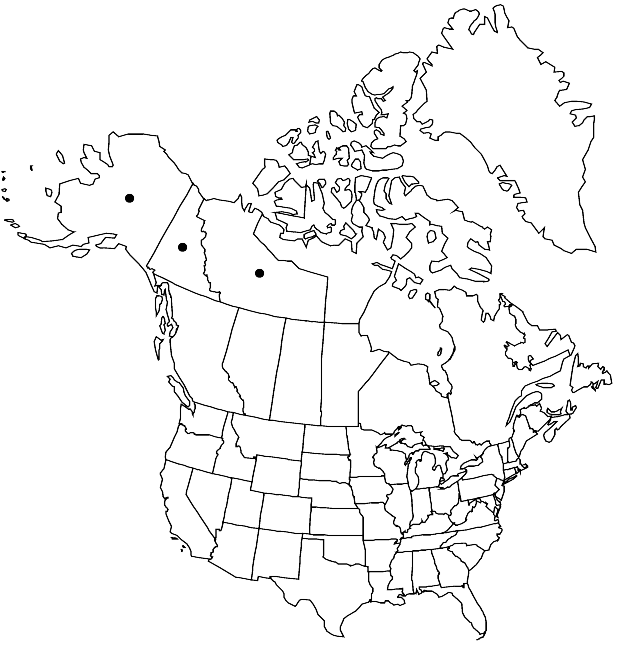Difference between revisions of "Smelowskia borealis"
Rhodora 54: 111. 1952.
FNA>Volume Importer |
imported>Volume Importer |
||
| (One intermediate revision by the same user not shown) | |||
| Line 6: | Line 6: | ||
|place=54: 111. 1952 | |place=54: 111. 1952 | ||
|year=1952 | |year=1952 | ||
| + | }} | ||
| + | |special_status={{Treatment/ID/Special_status | ||
| + | |code=E | ||
| + | |label=Endemic | ||
}} | }} | ||
|basionyms={{Treatment/ID/Basionym | |basionyms={{Treatment/ID/Basionym | ||
| Line 71: | Line 75: | ||
|publication title=Rhodora | |publication title=Rhodora | ||
|publication year=1952 | |publication year=1952 | ||
| − | |special status= | + | |special status=Endemic |
| − | |source xml=https:// | + | |source xml=https://bitbucket.org/aafc-mbb/fna-data-curation/src/2e0870ddd59836b60bcf96646a41e87ea5a5943a/coarse_grained_fna_xml/V7/V7_1154.xml |
|tribe=Brassicaceae tribe Smelowskieae | |tribe=Brassicaceae tribe Smelowskieae | ||
|genus=Smelowskia | |genus=Smelowskia | ||
Latest revision as of 22:30, 5 November 2020
Plants sometimes canescent basally; caudex usually simple, rarely branched. Stems: several from base, often unbranched or branched proximally, 0.6–3(–3.5) dm, trichomes simple, to 1 mm, mixed with smaller, dendritic ones. Basal leaves: petiole 0.5–3.2 cm, ciliate or not; blade obovate to ovate in outline, (terminal segments linear, oblong, or ovate), 0.7–2.5 cm × 4–14 mm, (terminal segments 0.2–1.1 cm × 1–5 mm), margins palmately (3 or) 5 (or 7)-lobed, (surfaces densely pubescent, trichomes dendritic, often mixed with larger, simple ones, to 1 mm), apex obtuse or subacute. Cauline leaves shortly petiolate or sessile; blade often similar to basal, smaller distally, margins sometimes pinnatifid. Racemes considerably elongated in fruit. Fruiting pedicels spreading to divaricate-ascending, (secund, often curved), proximalmost bracteate, 6–15(–20) mm, pubescent, trichomes simple mixed with smaller, dendritic ones. Flowers: sepals (usually persistent), 2.5–3.2 mm; petals purple to lavender, suborbicular to obovate, 4–5 × 1.5–2 mm, narrowed to claw, 1.5–2.5 mm, apex rounded; anthers oblong, 0.4–0.5 mm. Fruits spreading to ascending, usually oblanceolate to spatulate or linear-oblanceolate, rarely oblong-obovate, angustiseptate, (8–)12–28 × 4–8 mm, base cuneate, apex obtuse; valves each with prominent midvein and distinct lateral veins, (rarely sparsely pubescent); ovules 10–18 per ovary; style 0.1–1.1 mm. Seeds 1.5–2.2 × 1–1.3 mm. 2n = 12.
Phenology: Flowering Jun–Aug.
Habitat: Loose talus, metamorphic slide rock, rocky slopes, scree, shale splinters, limestone rubble, alpine ridges, barren rocks, unstable talus in alpine glacial bowl
Elevation: 600-1700 m
Distribution

N.W.T., Yukon, Alaska.
Discussion
W. H. Drury Jr. and R. C. Rollins (1952) and Rollins (1993) divided Smelowskia borealis into four varieties based on the duration of sepals (persistent versus caducous), style length (less than versus greater than 0.5 mm), and density of indumentum. The various states of these three characters are present in all possible combinations, and they are not inherited in the combinations presented by these authors. Some forms of the species are densely villous and resemble S. johnsonii in their leaf indumentum and perhaps merit recognition as an infraspecific taxon (var. villosa). As delimited here, S. borealis is quite variable; more studies are needed to determine whether or not any of the four varieties merit recognition at some rank. Although numerous collections of the species were examined, none of the types was available for preparing this account. The species is easily distinguished from the remaining North American Smelowskia by having secund infructescences and distinctly angustiseptate fruits.
Selected References
None.